- Home
- Sue Grafton
I Is for Innocent
I Is for Innocent Read online
PHENOMENAL PRAISE FOR THE MYSTERY NOVELS OF
#1 NEW YORK TIMES BESTSELLING AUTHOR
SUE GRAFTON
“Exceptionally entertaining . . . An offbeat sense of humor and a feisty sense of justice.”
—San Francisco Chronicle
“Millhone is an engaging detective-for-hire . . . P.I. Kinsey Millhone and her creator . . . are arguably the best of [the] distaff invaders of the hitherto sacrosanct turf of gumshoes.”
—The Buffalo News
“Once a fan reads one of Grafton’s alphabetically titled detective novels, he or she will not rest until all the others are found.”
—Los Angeles Herald Examiner
“Millhone is a refreshingly strong and resourceful female private eye.”
—Library Journal
“Tough but compassionate . . . There is no one better than Kinsey Millhone.”
—Best Sellers
“A woman we feel we know, a tough cookie with a soft center, a gregarious loner.”
—Newsweek
“Lord, how I like this Kinsey Millhone . . . The best detective fiction I have read in years.”
—The New York Times Book Review
“Smart, tough, and thorough . . . Kinsey Millhone is a pleasure.”
—The Bloomsbury Review
“Kinsey is one of the most persuasive of the new female operatives . . . She’s refreshingly free of gender clichés. Grafton, who is a very witty writer, has also given her sleuth a nice sense of humor—and a set of Wonder Woman sheets to prove it.”
—Boston Herald
“What grandpa used to call a class act.”
—Stanley Ellin
“Smart, sexual, likable and a very modern operator.”
—Dorothy Salisbury Davis
“Kinsey’s got brains and a sense of humor.”
—Kirkus Reviews
Also by Sue Grafton
A Is for Alibi
B Is for Burglar
C Is for Corpse
D Is for Deadbeat
E Is for Evidence
F Is for Fugitive
G Is for Gumshoe
H Is for Homicide
I Is for Innocent
J Is for Judgment
K Is for Killer
L Is for Lawless
M Is for Malice
N Is for Noose
O Is for Outlaw
P Is for Peril
Q Is for Quarry
R Is for Ricochet
S Is for Silence
T Is for Trespass
The author and publisher have provided this e-book to you for your personal use only. You may not make this e-book publicly available in any way. Copyright infringement is against the law. If you believe the copy of this e-book you are reading infringes on the author’s copyright, please notify the publisher at: us.macmillanusa.com/piracy.
This is a work of fiction. All of the characters, organizations and events portrayed in this novel are either products of the author’s imagination or are used fictitiously.
I IS FOR INNOCENT
Copyright © 1992 by Sue Grafton.
All rights reserved.
For information address St. Martin’s Press, 175 Fifth Avenue, New York, NY 10010.
Library of Congress Catalog Card Number: 91-45165
ISBN: 0-312-94526-4
EAN: 978-0-312-94526-8
Printed in the United States of America
Ballantine Books edition / May 1993
St. Martin’s Paperbacks edition / December 2008
St. Martin’s Paperbacks are published by St. Martin’s Press, 175 Fifth Avenue, New York, NY 10010.
eISBN 9781429911580
10 9 8 7 6 5 4 3 2 1
For my granddaughter, Erin, with a heart full of love
Acknowledgments
The author wishes to acknowledge the invaluable assistance of the following people: Steven Humphrey; Sam Eaton, Attorney-at-Law; B. J. Seebol, J.D.; John Mackall, Attorney-at-Law; Debra Young, Attorney-at-Law; Joe Driscoll, Joe Driscoll & Associates Investigations; Lieutenant Terry Bristol and Sergeant Carol Hesson, Santa Barbara County Sheriff’s Department; Detective Lawrence Gillespie, Coroner’s Bureau, Santa Barbara Sheriff’s Department; Eric S. H. Ching; Debby Davison, KEYT-TV; Richard Dodge, Far West Gun & Supply; Charles Sunderlin, Premier Products Manager, Heckler & Koch; George E. Rush; Florence Michel; David Elder; and Carter Blackmar.
Contents
Copyright Notice
Chapter 1
Chapter 2
Chapter 3
Chapter 4
Chapter 5
Chapter 6
Chapter 7
Chapter 8
Chapter 9
Chapter 10
Chapter 11
Chapter 12
Chapter 13
Chapter 14
Chapter 15
Chapter 16
Chapter 17
Chapter 18
Chapter 19
Chapter 20
Epilogue
1
I feel compelled to report that at the moment of death, my entire life did not pass before my eyes in a flash. There was no beckoning white light at the end of a tunnel, no warm fuzzy feeling that my long-departed loved ones were waiting on The Other Side. What I experienced was a little voice piping up in an outraged tone, “Oh, come on. You’re not serious. This is really it?” Mostly, I regretted I hadn’t tidied my chest of drawers the night before as I’d planned. It’s painful to realize that those who mourn your untimely demise will also carry with them the indelible image of all your tatty underpants. You might question the validity of the observation since it’s obvious I didn’t die when I thought I would, but let’s face it, life is trivial, and my guess is that dying imparts very little wisdom to those in the process.
My name is Kinsey Millhone. I’m a licensed private investigator operating out of Santa Teresa, which is ninety-five miles north of Los Angeles. For the past seven years, I’d been running my own small agency adjacent to the home offices of California Fidelity Insurance. My agreement with the company entitled me to the use of an attractive corner suite in exchange for the investigation of arson and wrongful death claims on an “as needed” basis. In early November, that arrangement was abruptly terminated when a hotshot efficiency expert was transferred to Santa Teresa from the CF branch office in Palm Springs.
I hadn’t thought I’d be affected by the change in company management since I was operating as an independent contractor instead of a bona fide California Fidelity employee. However, at our first (and only) meeting, this man and I took an instant dislike to each other. In the fifteen minutes that constituted our entire relationship, I was rude, pugnacious, and uncooperative. The next thing I knew I was out on the street with my client files packed up in assorted cardboard boxes. Let’s not even mention the fact that my association with CF had culminated in the wholesale bust-up of a multimillion-dollar auto insurance scam. All that netted me was a surreptitious handshake from Mac Voorhies, the company vice-president and avowed chickenheart, who assured me he was just as appalled by this guy as I was. While I appreciated the support, it didn’t solve my problem. I needed work. I needed an office in which to do the work. Aside from the fact that my apartment was too small to serve the purpose, it felt unprofessional. Some of my clients are unsavory characters and I didn’t want those bozos to know where I lived. I had troubles enough. With the recent sharp rise in property taxes, my landlord had been forced to double my rent. He’d been more upset about the hike than I had, but according to his accountant, he’d had no choice. The rent was still very reasonable and I had no complaints, but the increase couldn’t have come at a more awkward time. I had used my savings to pay for my “new”
car, a 1974 VW—this one pale blue, with only one minor ding in the left rear fender. My living expenses were modest, but I still didn’t have a sou left at the end of the month.
I’ve heard that no one gets fired without secretly hoping for the liberation, but that sounds like the kind of pronouncement you make before you’ve been given the boot. Being fired is the pits, ranking right up there with infidelity in its brutalizing effect. The ego recoils and one’s self-image is punctured like a tire by a nail. In the weeks since I’d been terminated, I’d gone through all the stages one suffers at the diagnosis of a soon-to-be-fatal disease: anger, denial, bargaining, drunkenness, foul language, head colds, rude hand gestures, anxiety, and eating disorders of sudden onset. I’d also entertained a steady stream of loathsome thoughts about the man responsible. Lately, however, I’d begun to wonder if it wasn’t true, this notion of a repressed desire to be unceremoniously shit-canned. Maybe I was bored with CF. Maybe I was burned out. Maybe I was simply longing for a change of scene. Whatever the truth, I’d begun to adjust and I could feel the optimism rising through my veins like maple syrup. It was more than a matter of survival. One way or another, I knew I’d prevail.
For the time being, I was renting a spare room in the law offices of Kingman and Ives. Lonnie Kingman is in his early forties, five foot four, 205 pounds, a weightlifting fanatic, perpetually pumped up on steroids, testosterone, vitamin B12, and caffeine. He’s got a shaggy head of dark hair, like a pony in the process of shedding a winter coat. His nose looks like it’s been busted about as often as mine has. I know, from the various degrees framed and hung on his wall, that he received a B.A. from Harvard and an M.B.A. from Columbia, and then graduated summa cum laude from Stanford Law School.
His partner, John Ives, while equally credentialed, prefers the quiet, nonglamorous aspects of the practice. His forte is appellate civil work, where he enjoys a reputation as an attorney of uncommon imagination, solid research, and exceptional writing skills. Since Lonnie and John established the firm some six years ago, the support staff has expanded to include a receptionist, two secretaries, and a paralegal who doubles as a runner. Martin Cheltenham, the third attorney in the firm, while not a formal partner, is Lonnie’s best friend, leasing office space from him in the same way I do.
In Santa Teresa, all the flashy cases seem to go to Lonnie Kingman. He’s best known for his criminal defense work, but his passion is complex trials in any case involving accidental injury or wrongful death, which is how our paths crossed in the first place. I’d done some work for Lonnie in the past and, aside from the fact that I’m occasionally in need of his services myself, I figured he’d be good for the referrals. From his point of view, it didn’t hurt to have an investigator on the premises. As with California Fidelity, I was not an employee. I worked as an independent contractor, providing professional services and billing accordingly. To celebrate the new arrangement, I went out and bought myself a handsome tweed blazer to wear with my usual jeans and turtleneck. I thought I looked pretty snappy in the outfit.
It was a Monday early in December when I first got involved in the Isabelle Barney murder case. I’d driven down to Cottonwood twice that day, two ten-mile round-trips, trying to serve a subpoena on a witness in a battery case. The first time, he wasn’t home. The second time, I caught him just as he pulled into his driveway from work. I handed him the papers, disregarding his annoyance, and took off again with my car radio thundering to mask his parting remarks, which were rude. He used a couple of words I hadn’t heard in years. On my way into town, I did a detour past the office.
The Kingman building is a three-story stucco structure, with parking tucked in at ground level and two floors of offices above. Across the facade, there are six pairs of floor-to-ceiling French doors that open inward for ventilation, each flanked by tall wooden shutters painted the soft verdigris of a greening copper roof. A shallow wrought-iron bracket is secured across the lower half of each set of doors. The effect is largely decorative, but in a pinch might prevent a suicidal dog or a client’s sulky child from flinging itself out the window in a fit of pique. The building straddles the property and has a driveway that passes through an arch on the right, opening up into a tiny parking lot in the rear. The one drawback is the parsimonious assignment of parking spaces. There are six permanent tenants and twelve parking spots. Since Lonnie owns the building, his law firm had been allotted four: one for John, one for Martin, one for Lonnie, and one for Lonnie’s secretary, Ida Ruth. The remaining eight places were parceled out according to the individual leases. The rest of us had a choice of street parking or one of the public lots three blocks away. The local rates are absurdly cheap, given big-city standards, but on my limited budget the tab mounts up. Street parking downtown isn’t metered, but it’s restricted to ninety minutes and the meter maids are quick to ticket you if you cheat by so much as a minute. As a consequence, I spent a lot of time either moving my car or cruising the area trying to ferret out a spot that was both close by and free. Happily, this exasperating situation only extends until 6:00 P.M.
It was then 6:15 and the third-floor windows along the front were dark, suggesting that everyone had already gone home for the day. When I drove through the arch, I saw Lonnie’s car was still in its slot. Ida Ruth’s Toyota was gone so I eased my car into her space, next to his Mercedes. An unfamiliar pale blue Jaguar sedan was parked in John’s slot. I hung my head out the car window and craned my neck. Lonnie’s office lights were on, two oblongs of pale yellow against the slanting shadows from the roof. He was probably with a client.
The days were getting steadily shorter, and a gloom settled over the town at that hour. Something in the air generated a longing for a wood fire, companionship, and the kind of cocktail that looks elegant in the print ads and tastes like liniment. I told myself I had work to do, but in truth it was just a way to postpone going home.
I locked my car and headed for the stairwell, which was tucked into a hollow core that extended up the center of the building like a chimney flue. The stairs were inky, and I had to use my little keychain flashlight to break up the darkness. The third-floor corridor was in shadow, but I could see lights in the reception area through the frosted glass in the front door. By day, the whole third-floor complex was cheerful and well lighted, with white walls, burnt orange carpeting, a forest of greenhouse plants, Scandinavian furniture, and original artwork in bright crayon tones. The office I was renting had served as a combination conference room and kitchen, and was outfitted now with my desk and swivel chair, file cabinets, a small flop-out couch that could double as a bed in an emergency, a telephone, and my answering machine. I was still listed in the yellow pages under Investigators, and people calling the old number were advised of the new. In the weeks since the move, while some business had trickled in, I’d been forced to resort to process serving to make ends meet. At twenty bucks a pop, I was never going to get rich, but on a good day I could sometimes pick up an extra hundred bucks. Not bad, if I could sandwich it in with other investigative work.
I let myself in quietly, not wanting to disturb Lonnie if he was in the middle of a conference. His office door was open and I glanced in automatically as I went past. He was chatting with a client, but when he caught sight of me, he raised his hand and beckoned. “Kinsey, could you spare a minute? There’s someone here I want you to meet.”
I backtracked to his doorway. Lonnie’s client was seated in the black leather wing chair, with his back to me. As Lonnie stood up, his client stood, too, turning to look at me as we were introduced. His aura was dark, if you buy that kind of talk.
“Kenneth Voigt,” Lonnie said. “This is Kinsey Millhone, the private investigator I was telling you about.”
We shook hands, going through the usual litany of greetings while we checked each other out. He was in his early fifties with dark hair and dark brown eyes, his brows separated by deep indentations that had been set there by a scowl. His face was blunt, his wide forehead softened by a tongu
e of thinning hair that was brushed to one side. He smiled politely at me, but his face didn’t brighten much. A pale sheen of perspiration seemed to glimmer on his forehead. While he was on his feet, he shed his sport coat and tossed it on the couch. The shirt he wore under it was dark gray, a short-sleeved Polo with a three-button placket open at the neck. Dark hair curled from his shirt collar and a mat of dark hair covered his arms. He was narrow through the shoulders and the muscles in his arms were stringy and undeveloped. He should have worked out at a gym, for his stress levels, if nothing else. He took out a handkerchief, dabbing at his forehead and his upper lip.
“I want her to hear this,” Lonnie was saying to Voigt. “She can go through the files tonight and start first thing in the morning.”
“Fine with me,” Voigt said.
The two sat down again. I folded myself into one corner of the couch and pulled my legs up under me, considerably cheered by the prospects of a paycheck. One advantage in the work for Lonnie is he screens out all the deadbeats.
Lonnie offered me a word of explanation before the conversation continued. “The P.I. we were using just dropped dead of a heart attack. Morley Shine, you know him?”
“Of course,” I said, startled. “Morley died? When was this?”
“Last night about eight. I was gone over the weekend and didn’t get back till after midnight so I didn’t hear about it myself until this morning when Dorothy called me.”
-->

 S Is for Silence
S Is for Silence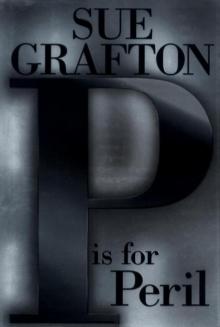 P Is for Peril
P Is for Peril R Is for Ricochet
R Is for Ricochet J Is for Judgment
J Is for Judgment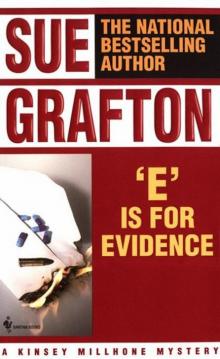 E Is for Evidence
E Is for Evidence T Is for Trespass
T Is for Trespass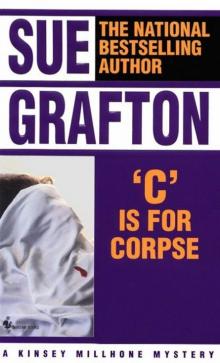 C Is for Corpse
C Is for Corpse U Is for Undertow
U Is for Undertow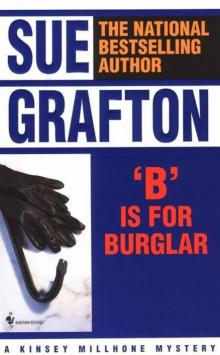 B Is for Burglar
B Is for Burglar Four Sue Grafton Novels
Four Sue Grafton Novels D Is for Deadbeat
D Is for Deadbeat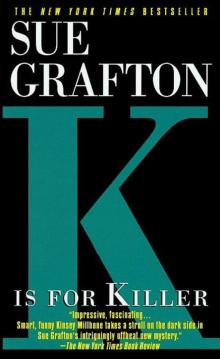 K Is for Killer
K Is for Killer I Is for Innocent
I Is for Innocent A Is for Alibi
A Is for Alibi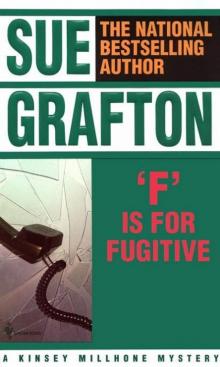 F Is for Fugitive
F Is for Fugitive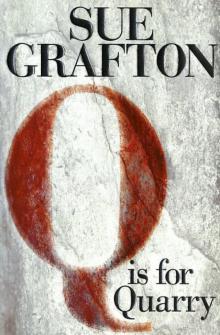 Q Is for Quarry
Q Is for Quarry W Is for Wasted
W Is for Wasted Kinsey and Me: Stories
Kinsey and Me: Stories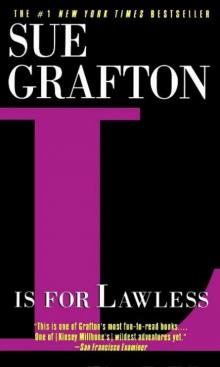 L Is for Lawless
L Is for Lawless Y Is for Yesterday
Y Is for Yesterday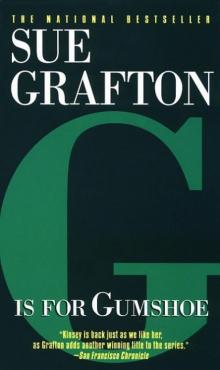 G Is for Gumshoe
G Is for Gumshoe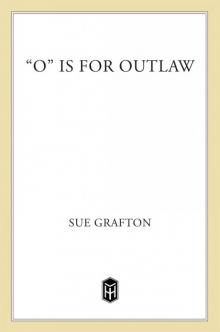 O Is for Outlaw
O Is for Outlaw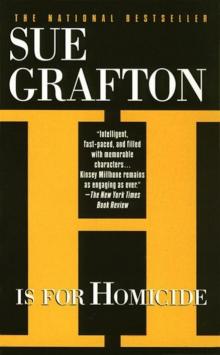 H Is for Homicide
H Is for Homicide X
X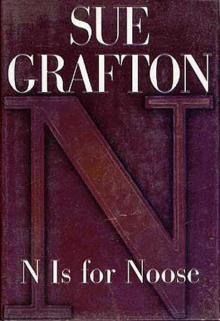 N Is for Noose
N Is for Noose Three Complete Novels: A Is for Alibi / B Is for Burglar / C Is for Corpse
Three Complete Novels: A Is for Alibi / B Is for Burglar / C Is for Corpse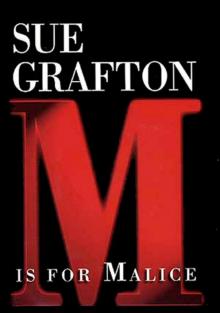 M Is for Malice
M Is for Malice I is for INNOCENT
I is for INNOCENT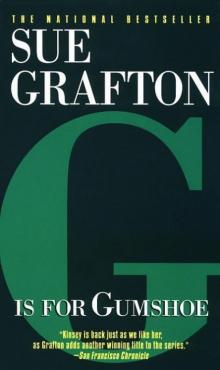 G is for GUMSHOE
G is for GUMSHOE K is for KILLER
K is for KILLER S is for SILENCE
S is for SILENCE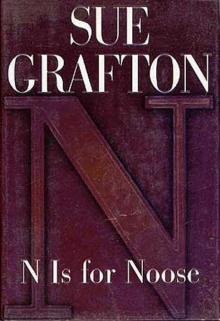 N is for NOOSE
N is for NOOSE D is for DEADBEAT
D is for DEADBEAT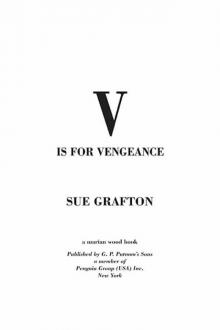 V is for Vengeance
V is for Vengeance U is for Undertow
U is for Undertow W Is for Wasted km-23
W Is for Wasted km-23 O is for OUTLAW
O is for OUTLAW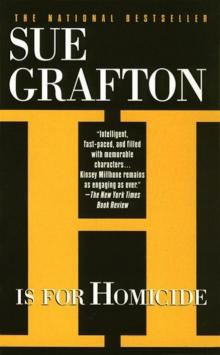 H is for HOMICIDE
H is for HOMICIDE Sue Grafton Novel Collection
Sue Grafton Novel Collection Kinsey and Me
Kinsey and Me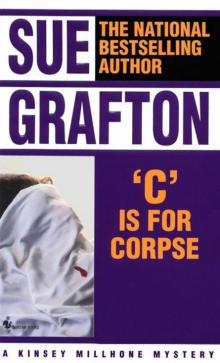 C is for CORPSE
C is for CORPSE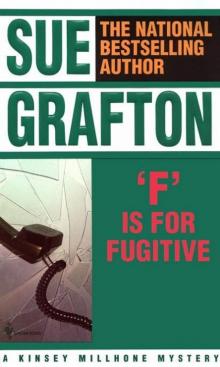 F is for FUGITIVE
F is for FUGITIVE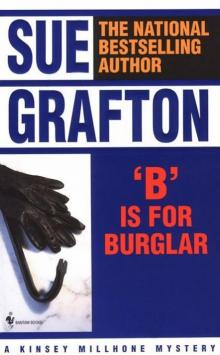 B is for BURGLAR
B is for BURGLAR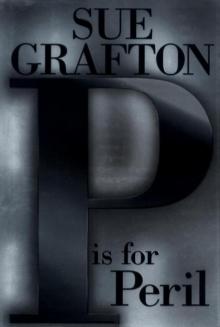 P is for PERIL
P is for PERIL A is for ALIBI
A is for ALIBI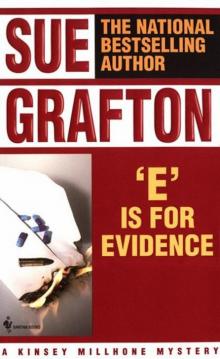 E is for EVIDENCE
E is for EVIDENCE J is for JUDGMENT
J is for JUDGMENT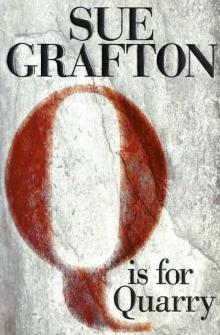 Q is for QUARRY
Q is for QUARRY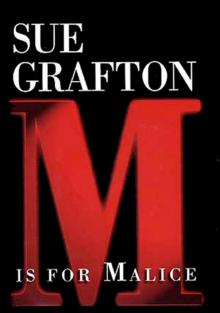 M is for MALICE
M is for MALICE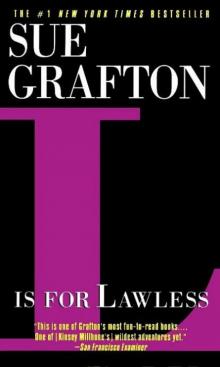 L is for LAWLESS
L is for LAWLESS